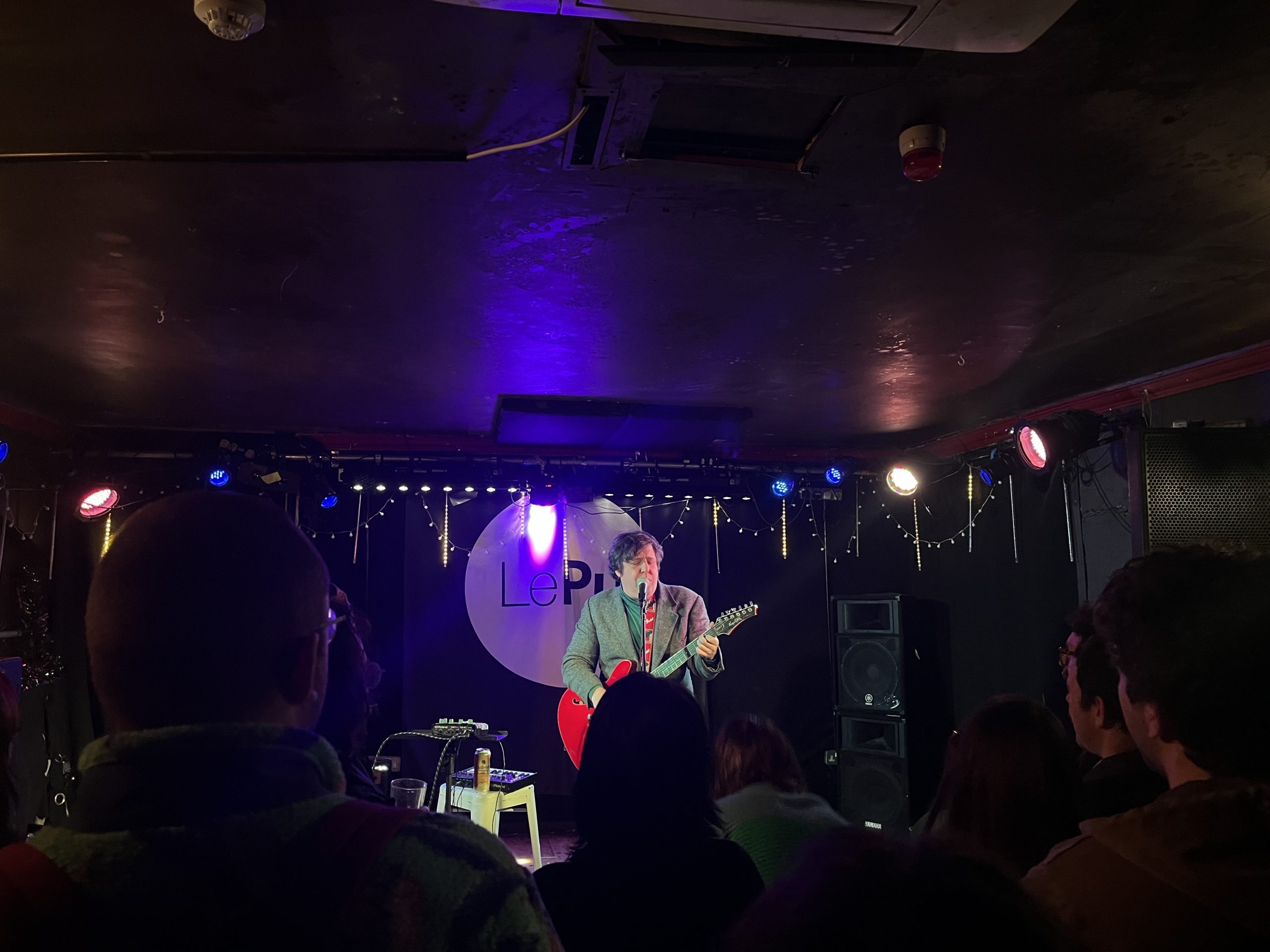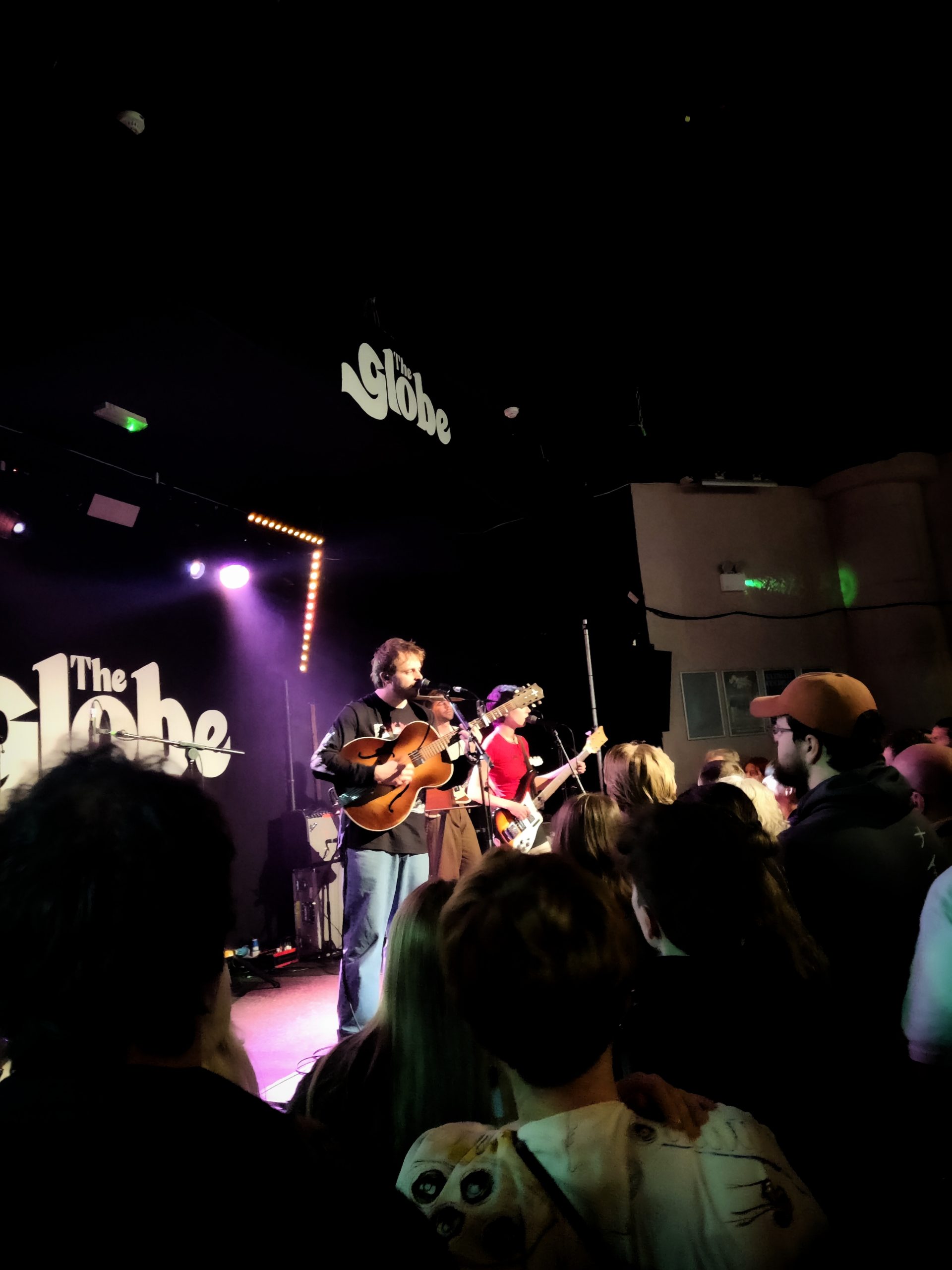ÔÿàÔÿàÔÿàÔÿàÔÿà
Words by Molly Govus
Sitting in the Chapter Arts Theatre, I was immediately taken back to my GCSE drama days. The black wooden set blocks, the itchy fabric chairs and the smell of what I can only describe as an old school room. It was nostalgic to say the least, but there was something different about this set up to what I have previously experienced. This was not some mediocre student drama performance ÔÇô it was a work of art.
The literary story of Frankenstein was turned into a modern, thought-provoking performance filled with dance, physical theatre and music. Phil William’s adaptation perfectly encapsulates all that Frankenstein stands for: identity, fear of future developments and repression. Whilst embodying the gothic story for all that it is, ÔÇÿCascade’ theatre company managed to make all of Shelley’s moral teachings relatable to the 21st century. That is a clever and scary thought within itself ÔÇô do we still have the same fears that were provoked within audiences of the 19th century? This is just one of many questions I had when leaving the theatre.
Physical theatre was without a doubt the most fascinating part of the performance. Frankenstein’s repetitive dance moves echoed the repressed emotions within, resulting in the creation of his own monster. A scene at ÔÇÿShelley’s bar’ showed the actors dancing wildly, all wearing blank face masks. The creature, standing behind them all, could only join in by concealing his identity with a mask also. Without any words whatsoever, an image of concealed identity and lack of acceptance was emphasised.
From a feminist perspective, there were three women within the cast that aided the movement of the set and the storyline through bridging the narrative between scenes. Could this be the classic English student reading far too much into the performance? I really hope not. In the time of 19th century where women were seen as subordinate, Williams gave these women a key role in the development of the plot. In some cases, you could say that the plot would not have developed without the women. This is just one of many ways in which the story of Frankenstein was modernised in such an adept way.
On a black table wrapped in cling film, the creature began the performance writhing behind this barrier of film. Confined and growing in what could be interpreted as a womb, Frankenstein marvelled at his creation. The cyclical structure adopted by Williams ensured that the creature ended up wrapping his creator into the same confinement that he was once in. The performance ended by the creature walking away, cling film dragging from his creator to his hand. It was completely obvious that the creature was in control; he was in control throughout the deterioration of his creator. Perhaps you could even say that this image was synonymous to that of a womb and umbilical cord. Why is this staging so significant? The creature was in control and arguably this reveals the capacity for evil that lies within all of us. The question is, will it be repressed, or will we let it out? We will only know in time.
Email interview with director,
Phil Williams:
What made you choose to recreate Frankenstein?
2018 marked 200 years since the publication of Shelley’s epic, so it seemed the right time to recreate this gothic work. Over the decades there have been many interpretations of the novel… not many dealing with the actual themes of the novel itself but more in a sensationalist Hollywood horror way. The novel deals with love, hate, revenge, trust, social issues, acceptance, guilt, prejudice, death, bad parenting, playing god to name but a few.
What is the overall message that you wanted to convey to the audience by the end of the show?
I guess firstly a different way of looking at the themes of the book. I see it more as a love story rather than a horror story. Everyone deserves to be loved and the opportunity to love. If this is denied for what ever reason then the consequences can be catastrophic. No one is born monstrous, society creates monsters.
Did the performers have to do workshops in body language and how to convey ‘The Monster’?
The dancers went through many explorations of character and how to physicalise them for each of the characters not only the creature. (I avoid the word monster at all times and think more creature…) The creature went on a journey from new born, clumsy and uncoordinated to a fine physical specimen both intelligent and strong
How does the use of dance in the performance heighten the story/message?
Thee is that saying that a picture can tell a thousand words. We all know when some is looking happy or sad in a single glance… the body has a great way of showing emotion. It’s quite clear though body movement and dynamic to get across emotion and intention. The dead duet in the show is a real gut wrencher… the creature dancing with the dead body, trying to bring her, his only hope of love to life.
Why did you choose the cling film to symbolise the creation of The Monster?
I wanted to start the show with the birth of the creature. I didn’t want the audience to have any preconception of this being a monster of a scientific experiment of bolts and lightening…. I used the wrapping to signify a womb, a chrysalis a place where something is born from. I wanted the creature to be new born not, innocent, childlike.
How long was the rehearsal process and what were the biggest problems that you overcame during rehearsals?
We had a 6 week process to devise, create and rehearsed the show. The main thought for me in rehearsal was did it make sense. Contemporary dance is so often an art form with at is not very well understood. With such a well known title I wanted to be clear on narrative and the themes that we were exploring directly from the text. Second to be that was managing to squeeze everything into that timeframe… set, costume, video, song, text, lighting and of course the movement.
Where are you touring next/what is your next show?
The company take a break from now, we will see if Frankenstein lives on and will be shown in different places or if we go on to creating a totally different show.


